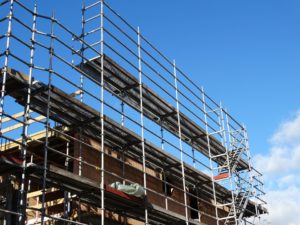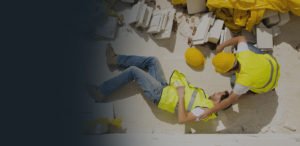How To Recover From Serious Facial Fractures After A Workplace Accident

Although many Americans suffer serious facial fractures due to motor vehicle accidents, a large percentage of them also develop these due to workplace falls. The improper use of ladders, poorly constructed and unstable scaffolding, and inadequate guardrails on construction platforms all contribute to highly painful and sometimes life-threatening facial fracture.

What follows is a closer look at helpful terms and definitions involving facial fractures and how different vision and other types of capabilities can be temporarily or permanent injured. There is also a brief review of frequent facial fractures reported by construction workers, and limited information about how doctors diagnose and treat these injuries.
Facial fractures: Useful terms and definitions
- Orbital bone fractures. This term refers to damaged bones around the eye sockets.
- Fractured zygomas. The human cheekbones can suffer serious harm due to workplace falls. They can also be injured during car and motorcycle crashes, domestic (or street) violence, and sports injuries.
- The forehead or frontal bone can be fractured.
- Nasal fractures (or a broken nose) can occur due to a bad fall.
- Fractures of the maxillary bones (the upper jaw) can occur.
- Some workers who suffer bad falls develop a fractured mandible or lower jaw.
Whenever workers fall from remarkably high places to the ground, they often suffer fractures to multiple facial bones. In some cases, the fractures are just unilateral (on one side) — while in other instances they are often bilateral (occurring on both sides of the person’s face).
Workplace falls often result in these common types of facial fractures
- A broken nose. This type of fracture can be very painful and often results in workers developing dark or pooled blood under the skin. These bones tend to break frequently after falls, especially since they are both weak and thin.
- Forehead fractures. It usually takes a high-impact injury to cause a frontal bone (or forehead) fracture. These tend to occur right in the middle of the forehead where the bone is weakest. Patients who suffer this type of injury may also have to cope with some type of neurological trauma that can lead to cerebrospinal fluid leakage, damage to the sinus ducts, and various eye injuries.
- Eye socket or orbital fractures. There are three different types of these broken bones. They include (1) “orbital rim” fractures. Only tremendous force or major fall can inflict this type of damage around the outer rim of the eye socket. (2) “Blowout” fractures involve a crack forming in the thin bone below the eye socket. If eye muscles and other surrounding structures become trapped in this type of bone break, they can prevent the eyeballs from moving properly. (3) This third type of orbital fracture is called a “direct orbital floor fracture.” It is another rim fracture that extends all the way into the lower eye socket bone.
- Broken bones in the mid-face area are also known as “Le Fort fractures.” It nearly always requires some type of blunt force trauma to cause a mid-face fracture.
- Mandible or lower jaw fractures. Damage to these areas nearly always makes it more difficult for the patient to talk or chew properly. Since the lower jaw supports the teeth, a break in this area frequently results in loose or broken teeth.
While some of these fractures can occur after a worker hits his head on ground objects that can penetrate the face, most of them simply result from the tremendous force that occurs due to major workplace falls. It is crucial to immediately rush workers who have just suffered major head injuries to the nearest emergency room for diagnosis and treatment. Whenever possible, it helps to send a supervisor or another worker along who can describe the exact nature of the accident to the doctors since the injured patient may not be able to maintain consciousness.
Types of secondary damage often caused by facial fractures
- Minor or more profound visual difficulties after the eye socket bones are fractured.
- Problems with breathing properly – or the sense of smell can be disturbed – after nasal bones are broken.
- Jawbone fractures can make it difficult for some patients to chew and swallow their food – or even speak clearly.
- Cranial nerves can be damaged after various types of facial bone damage.
- Muscles surrounding the fractured facial bones can be damaged, making it harder for the injured person to do such things as create facial expressions or move one or both eyes.
Diagnostic tests and suggested treatments
While performing the initial physical exam of the patient — making sure this person can breathe easily, numerous questions must be asked to determine the full extent of the brain injuries that may have occurred, in addition to one or more facial fractures.

Should the doctors notice that there may be a greater-than-normal distance between the eyes, they will check to see if the patient has suffered a nasoethmoid fracture. Tests commonly ordered include two-dimensional CT scans of the face and a three-dimensional, reconstructive scan (possibly before and after any required surgery).
Additional treatment after either closed or open reduction (resetting of the fractured bones) can include such drugs as pain relievers and oral steroids to minimize any swelling.
Find legal help after a construction accident
If you have suffered a serious fall injury on a construction site, you need to contact our New York City construction accident injury law firm. We will carefully investigate all the facts of your case, review all your medical records, and then fight hard to win the maximum compensation available to you. We want every client to fully recover for all lost wages, pain and suffering, medical expenses, and other losses.




